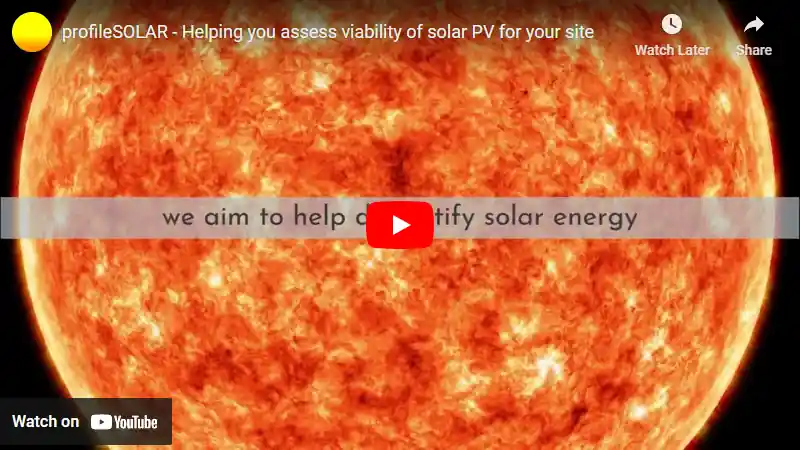

Santa Cruz de Tenerife, Spain, with its latitude of 28.4719 and longitude of -16.2541, is a favorable location for the installation and operation of solar photovoltaic (PV) systems. The city exhibits substantial solar energy potential throughout the year due to its geographical position and climatic conditions.
During the summer season, each kilowatt (kW) of installed solar capacity can generate an average daily output of 7.08 kilowatt-hours (kWh). This high productivity level is attributable to extended daylight hours and elevated temperatures that characterize this period.
In autumn, although there's a decrease in sunlight intensity due to shorter days, each kW of installed solar still produces an average daily yield of 5.14 kWh. This production continues to decline in winter with an average yield per day per kW dropping further to 4.14 kWh owing to reduced sunlight availability and lower ambient temperatures.
However, as we transition into spring from winter months, there's an increase in solar energy generation with each kW yielding about 6.77 kWh per day on average thanks primarily to longer daylight hours and warmer temperatures.
To optimize the performance of fixed panel installations at this location throughout all seasons, it's recommended that panels are tilted at an angle facing south by approximately 25 degrees from horizontal plane which aligns them more directly towards incoming sunlight for maximum absorption.
Despite Santa Cruz de Tenerife’s suitability for year-round solar power generation due largely to its sunny climate and geographical positioning near the equator line which ensures ample sun exposure; certain factors like occasional cloud cover or dust storms may temporarily reduce insolation levels impacting PV system efficiency slightly but these events are rare occurrences rather than regular phenomena here hence their impact on overall annual production will be minimal if any.
As a preventive measure against potential dust accumulation on panels which could obstruct sunlight penetration thus reducing their efficiency; regular cleaning maintenance is advised especially after dust storms to ensure panels are kept clean for optimal sunlight absorption and conversion.
Note: The Northern Sub Tropics extend from 23.5° latitude North up to 35° latitude.
So far, we have conducted calculations to evaluate the solar photovoltaic (PV) potential in 85 locations across Spain. This analysis provides insights into each city/location's potential for harnessing solar energy through PV installations.
Link: Solar PV potential in Spain by location
Become the exclusive sponsor for Santa Cruz De Tenerife, Spain!
Solar output per kW of installed solar PV by season in Santa Cruz De Tenerife
Seasonal solar PV output for Latitude: 28.4719, Longitude: -16.2541 (Santa Cruz De Tenerife, Spain), based on our analysis of 8760 hourly intervals of solar and meteorological data (one whole year) retrieved for that set of coordinates/location from NASA POWER (The Prediction of Worldwide Energy Resources) API:




Ideally tilt fixed solar panels 25° South in Santa Cruz De Tenerife, Spain
To maximize your solar PV system's energy output in Santa Cruz De Tenerife, Spain (Lat/Long 28.4719, -16.2541) throughout the year, you should tilt your panels at an angle of 25° South for fixed panel installations.
As the Earth revolves around the Sun each year, the maximum angle of elevation of the Sun varies by +/- 23.45 degrees from its equinox elevation angle for a particular latitude. Finding the exact optimal angle to maximise solar PV production throughout the year can be challenging, but with careful consideration of historical solar energy and meteorological data for a certain location, it can be done precisely.
We use our own calculation, which incorporates NASA solar and meteorological data for the exact Lat/Long coordinates, to determine the ideal tilt angle of a solar panel that will yield maximum annual solar output. We calculate the optimal angle for each day of the year, taking into account its contribution to the yearly total PV potential at that specific location.

Seasonally adjusted solar panel tilt angles for Santa Cruz De Tenerife, Spain
If you can adjust the tilt angle of your solar PV panels, please refer to the seasonal tilt angles below for optimal solar energy production in Santa Cruz De Tenerife, Spain. As mentioned earlier, for fixed-panel solar PV installations, it is optimal to maintain a 25° South tilt angle throughout the year.
| Overall Best Summer Angle | Overall Best Autumn Angle | Overall Best Winter Angle | Overall Best Spring Angle |
|---|---|---|---|
| 13° South in Summer | 33° South in Autumn | 43° South in Winter | 21° South in Spring |
Our recommendations take into account more than just latitude and Earth's position in its elliptical orbit around the Sun. We also incorporate historical solar and meteorological data from NASA's Prediction of Worldwide Energy Resources (POWER) API to assign a weight to each ideal angle for each day based on its historical contribution to overall solar PV potential during a specific season.
This approach allows us to provide much more accurate recommendations than relying solely on latitude, as it considers unique weather conditions in different locations sharing the same latitude worldwide.
Topography for solar PV around Santa Cruz De Tenerife, Spain
The topography around Santa Cruz de Tenerife, Spain is generally flat with some low hills and mountains. Areas most suited to large-scale solar PV near Santa Cruz de Tenerife are those that have a clear view of the sun and are relatively free from shade or cloud cover. The nearby coastal areas are particularly suitable due to their higher levels of sunshine throughout the year. Additionally, areas in the vicinity of El Teide National Park may also be well suited for solar projects as they offer an expansive view of the sky and good access to sunlight.
Spain solar PV Stats as a country
Spain ranks 10th in the world for cumulative solar PV capacity, with 15,952 total MW's of solar PV installed. This means that 9.00% of Spain's total energy as a country comes from solar PV (that's 6th in the world). Each year Spain is generating 237 Watts from solar PV per capita (Spain ranks 20th in the world for solar PV Watts generated per capita). [source]
Are there incentives for businesses to install solar in Spain?
Yes, there are several incentives for businesses wanting to install solar energy in Spain. These include the following:
1. The Spanish government offers a feed-in tariff (FIT) for businesses that install solar energy systems. This FIT guarantees a fixed price per kWh of electricity generated by the system over a period of 20 years.
2. Businesses can also benefit from tax deductions and other financial incentives when installing solar energy systems in Spain.
3. Companies may be eligible for grants or subsidies from regional governments or local authorities to help cover the cost of installation and maintenance of their solar energy systems.
4. Businesses may also be able to take advantage of net metering, which allows them to sell excess electricity generated by their solar energy system back into the grid at market prices, thus reducing their overall electricity costs even further.
Do you have more up to date information than this on incentives towards solar PV projects in Spain? Please reach out to us and help us keep this information current. Thanks!
Feeling generous?

Share this with your friends!


Compare this location to others worldwide for solar PV potential
The solar PV analyses available on our website, including this one, are offered as a free service to the global community. Our aim is to provide education and aid informed decision-making regarding solar PV installations.
However, please note that these analyses are general guidance and may not meet specific project requirements. For in-depth, tailored forecasts and analysis crucial for feasibility studies or when pursuing maximum ROI from your solar projects, feel free to contact us; we offer comprehensive consulting services expressly for this purpose.
Helping you assess viability of solar PV for your site
Calculate Your Optimal Solar Panel Tilt Angle: A Comprehensive Guide
Enhance your solar panel's performance with our in-depth guide. Determine the best tilt angle using hard data, debunk common misunderstandings, and gain insight into how your specific location affects solar energy production.







